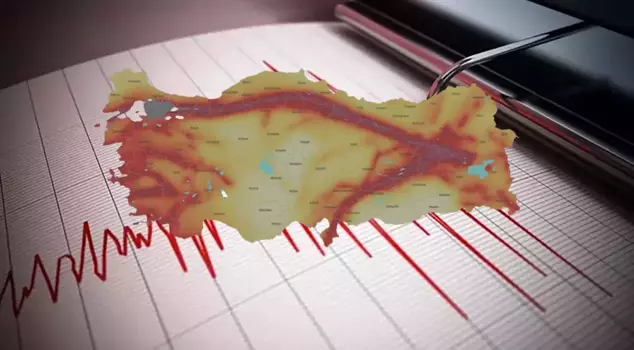
29.11.2024 12:11
Associate Professor Dr. Hamdi Alkan evaluated the 4.3 magnitude earthquakes that occurred in Bitlis on November 27. Dr. Alkan stated that the fault where these earthquakes occurred is not included in the active fault map of the General Directorate of Mineral Research and Exploration (MTA), saying, "An earthquake occurred, but there is no fault shown on the maps. This is a geologically special area. The earthquake map needs to be updated."
Recently, two earthquakes that occurred in Bitlis surprised experts. The reason for the astonishment is the absence of an active fault line in the region where the earthquake occurred.
Associate Professor Dr. Hamdi Alkan from Van Yüzüncü Yıl University Department of Geophysics stated, "The earthquakes that occurred show us that the region has a seismic productivity, indicating that it is a tectonic or volcanic earthquake-producing area. After the main shock, 30 aftershocks occur. These will continue in small increments."
"ACTIVE FAULT NOT VISIBLE"
Noting that the earthquakes on November 27 occurred just west of Hizan, while the earthquake in September occurred to the east of Hizan, Dr. Alkan also pointed out that there are many active faults in the Bitlis and Van region; "Many faults are visible on the active fault map of MTA. What is interesting here is that there is no visible active fault in the area where these earthquakes occurred. There is no fault or fault zone visible here. These earthquakes are strike-slip faults," he stated.
"EARTHQUAKE MAP NEEDS TO BE UPDATED"
Stating that the earthquake map needs to be updated, Alkan said, "When we look at MTA's fault map, the places where there are lines are faults. When we look at the earthquakes that occurred on November 27, there is no fault visible on this map. What is important is that if there is an earthquake in a place, there is a fault there. This area needs to be taken into account and studied. The active fault map is constantly being updated. In every new study, especially in the works done by MTA, AFAD, and universities, these are updated at certain intervals. After the Kahramanmaraş earthquakes, the active fault map was updated again. However, when we look at this map, there are no faults in the recent earthquakes that occurred in Bitlis. The active fault map of MTA needs to be updated. This is a geologically special area. The earthquake map needs to be updated," he said.